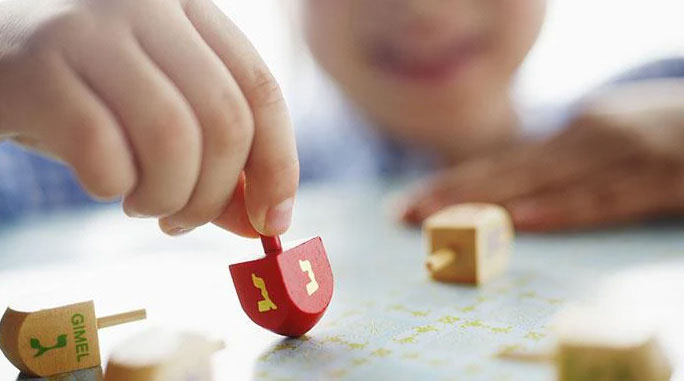The Menorah Mix-Up
During Hanukah, little Ella wanted to help light the menorah for the first time.
She proudly said, “I’ll light all eight candles tonight!”
Her dad laughed, “Not yet, sweetie – we only light one more each night.”
Ella frowned, thought for a moment, and said, “So… we’re just warming up to it?”
Sharon K.
Super Interview Skills
At a job interview, the manager asked, “What are your greatest strengths and weaknesses?”
The applicant replied,
“My main weakness is that I struggle with reality. I can’t always tell fantasy from real life.”
“And your strengths?”
“I’m Batman!”
Freddy C.
Tech Support Dad
My dad recently decided to become “tech-savvy,” which mostly means he now calls me every time his screen goes dark.
Last week, he called in a panic:
“Son, the internet is gone.”
“Gone?” I asked. “What do you mean?”
“The whole thing! I clicked something and now it’s just… white!”
I asked him to describe what he saw.
“There’s a little picture of a plug and it says, ‘no connection.’”
“Dad,” I said, “you just unplugged the router.”
He paused and then said, completely serious:
“So… is there a button to plug it back in?”
Robert S.
A Responsible Employee
Chaim Yankel was interviewing for a job. The interviewer said, “In this job we need someone who is responsible.”
“I’m the one you want,” Chaim Yankel replied. “At my last job every time anything went wrong, they said I was responsible.”
Menahem A.
Aches and Pains
At the Beth Israel nursing home in Boca Raton Florida, a group of senior citizens were sitting around talking about their aches and pains. “My arms are so weak I can hardly lift this cup of coffee,” said Applebaum.
“I know what you mean. My cataracts are so bad I can’t even see my coffee,” replied Shiffman.
“I can’t turn my head because of the arthritis in my neck,” said Markewitz, to which several nodded weakly in agreement.
“My blood pressure pills make me dizzy,” Himmelfarb contributed.
“I guess that’s the price we pay for getting old,” winced Goldberg as he slowly shook his head. Then there was a short moment of silence.
“Well, it’s not that bad,” said Rosenbloom cheerfully. “Thank Gd we can all still drive.”
Harry F.
The Case of the Missing Gelt
One morning during Hanukah, Nathan noticed all his chocolate gelt was missing from the kitchen table.
He ran to his little sister and asked, “Did you take my chocolate coins?”
She shook her head. “Nope!”
He asked his brother, who said, “Wasn’t me!”
Finally, Nathan turned to his dad, who had a suspicious bit of chocolate on his cheek.
“Dad,” Nathan said slowly, “do you know what happened to my gelt?”
His dad smiled guiltily. “Let’s just say… a great miracle happened here!”
Morris D.
Hard to Tell
A mechanic friend loaned me a junker while I saved for a car.
It was so beat up, even its dents had dents.
One afternoon, I saw a police officer and a woman inspecting it.
“I saw her hit your car,” said the officer, “but I can’t figure out where.”
Esther K.
Doggy Daycare Drama
We took our new puppy to doggy daycare. When we picked him up, the woman at the counter handed him over and whispered, “He’s… very spirited.”
“Spirited?” I asked. “Like… playful?”
She said, “More like… he started a revolution in the small dog room.”
Apparently, while we were enjoying a peaceful lunch, our puppy had convinced the others to dig a tunnel under the fence, chew through three toys, and redistribute all the treats “fairly.”
We asked what we should do.
She said, “Maybe… obedience school. Or politics.”
Joey L.
Dreaming in Hebrew
Joey was having some trouble in Hebrew class.
To encourage him, his teacher, Mrs. Shalva, said, “You’ll know you’re really beginning to get it when you start dreaming in Hebrew.”
One day, Joey ran into class all excited, saying, “Mrs. Shalva! I had a dream last night and everyone was talking in Hebrew!”
“Great!” said Mrs. Shalva. “What were they saying?”
“I don’t know,” Joey replied. “I couldn’t understand them.”
Michael B.
A Letter-Perfect Riddle
Q: What starts with a P, ends with an E, and has thousands of letters?
A: The post office!
Sharon P.
Identity Confirmed
At checkout, the clerk noticed I hadn’t signed my credit card.
“I can’t complete the transaction unless your card is signed,” she said.
So I signed the card in front of her.
She compared it to the receipt I had just signed.
They matched.
Phew!
Nathan H.
Beachside Wisdom
Savta Esther, a tough Israeli grandmother, was at the beach with her grandkids when a man approached.
“Please, Geveret,” he begged, “I haven’t eaten all day.”
She looked him up and down and said,
“Good. Now you won’t get cramps when you go swimming.”
Rena B.
Return to Sender
My grandfather doesn’t trust online shopping.
Last month, he accidentally ordered a sweater in the wrong size. Instead of returning it online, he took it to the post office and said,
“I’d like to un-buy this.”
The clerk tried to explain the return process. He shook his head and said,
“I paid real money. I want a real person to fix it.”
Eventually, the clerk helped him print a return label.
As he left, Grandpa turned back and said,
“You know, in my day, we used to go to a store, try something on, and if it didn’t fit… we just didn’t buy it in the first place. Revolutionary, huh?”
Nadine M.
Flight Delay
A jetliner abruptly stopped on the tarmac at Ben Gurion Airport in Tel Aviv, turned around and returned to the gate. After a lengthy delay, it finally took off.
A concerned passenger asked the flight attendant, “What was the problem?”
“The pilot was bothered by a noise he heard in the engine,” explained the flight attendant.
“So why such a long delay?” asked the passenger.
“It took us a while to find a new pilot.”
Carolyn R.
The Cow’s Side of the Argument
A vegetarian looked at my burger and said, “You know, a cow died so you could eat that.”
I looked at her salad and said, “Maybe it died because you kept eating all its food.”
Judah H.












